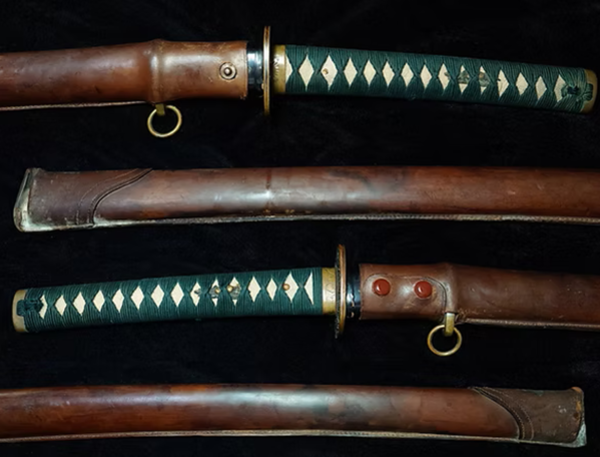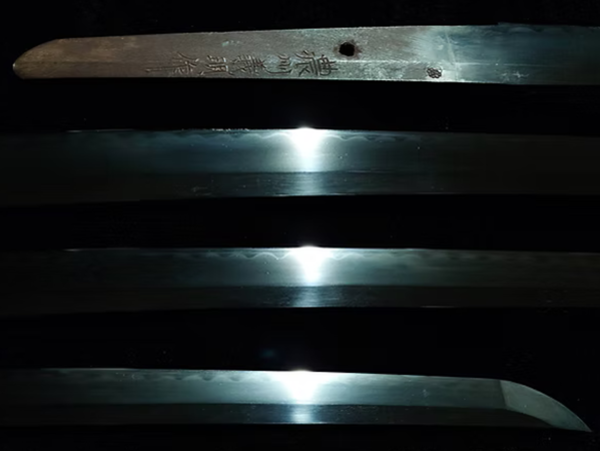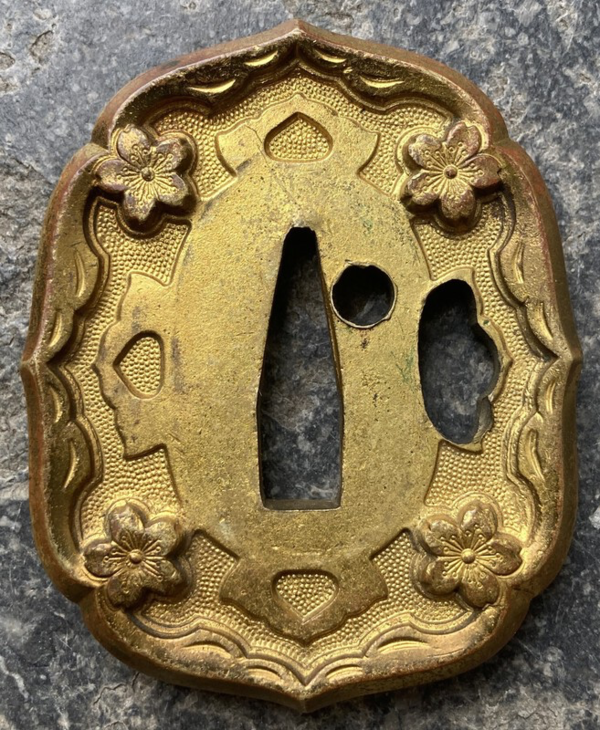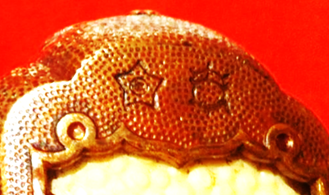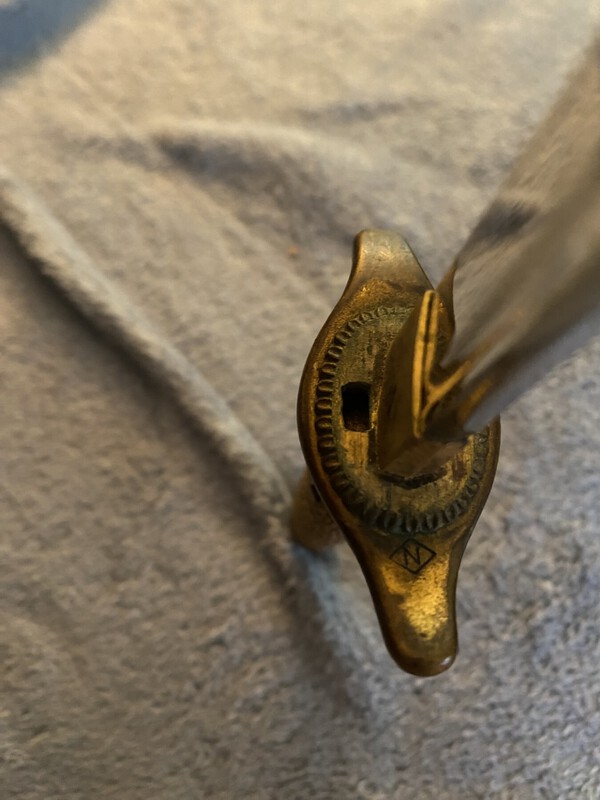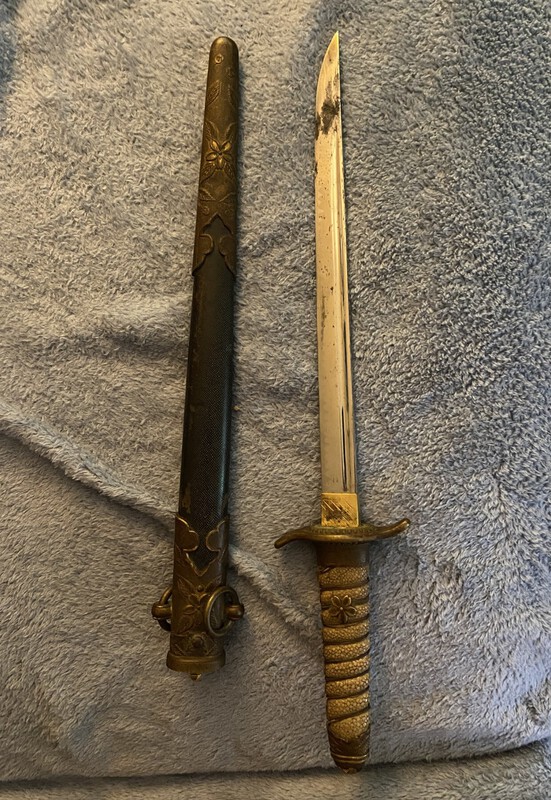-
Posts
13,719 -
Joined
-
Last visited
-
Days Won
167
Content Type
Profiles
Forums
Events
Store
Downloads
Gallery
Everything posted by Bruce Pennington
-

Can someone please help me identify this sword.?
Bruce Pennington replied to NikkiK's topic in Translation Assistance
Nikki, The stamp at the top, "Seki", was used between 1940 and 1944, with most dated blades showing up in 1942, just to narrow down the date range for you. It was a quality inspection stamp used by the civil industry to weed out poor blades. The Seki Cutlery Manufacturers Association stamped approved blades, like this one. Such blades were usually really good quality, though not fully traditionally made - called showato. -

An Interesting (if Troubled) Zoheito
Bruce Pennington replied to Kaigunto230's topic in Military Swords of Japan
I did not know that, either! Thomas, you always amaze! Thanks brother. -
I have seen buttons like that. Not the "norm" but not uncommon. The patina/finish on the fittings looks to be legit. You will see variations in such things. Various shops that made them sometimes did their own thing, plus custom work often diverted from the norms/standard.
-
Hi Craig! As you suspected, it is a Chinese fake. Signs: The Chinese fakes like to use serial numbers on the habaki (brass collar on blade), writing on the blade, and Damascus steel. Also, they make the folds of the handle wrap all turn in the same direction, while Japanese alternate directions in their wrap folds.
-
Here's one for the record books! A 3-5-3 on the tsuba. Yoshiaki, showa stamped blade in civil re-fitted rig. Found on this Shigure-militaria sale site.
-

Translation and thoughts please
Bruce Pennington replied to Michaelr's topic in Translation Assistance
This is the only Sukesada I have on file, but I did a quick scan of a few others from other smith’s and have found some on the same side as this one. I do not know the predominant practice as I did not go through all of the files, but I found at least two others on the same side. -

My kai-gunto: some photos & questions.
Bruce Pennington replied to Nazar's topic in Military Swords of Japan
Excellent work Nazar. It is a good feeling, isn’t it, when you are able to restore an old war blade back to a condition that is more like it’s original. It looks like you are a natural craftsman! -

An Interesting (if Troubled) Zoheito
Bruce Pennington replied to Kaigunto230's topic in Military Swords of Japan
That was a great write up Michael! Looks like you have a bit of the researcher blood in you! Considering the condition of the blade surface, I doubt anyone will be able to really tell whether it was traditional or not from the pictures. But that’s not my forte anyway. @mecox @BANGBANGSAN @Kiipu Something unusual about this one is the construction of the blade where the blade meets the nakago. There is a distinct edge that run between the machi. I will have to go back and look at my other zoheito, but from memory, I don’t recall ever seeing this before. Very unusual. -

Questionable Gunto up for Auction
Bruce Pennington replied to Kaigunto230's topic in Auctions and Online Sales or Sellers
I would lean towards this being a late war sword. The fittings have been blackened, and we see that often. It has unfinished shark skin same’ and the all brown Gunzoku tassel which is something I have never seen on fakes. The ito is also wrapped properly. -

Attention Mantetsu Owners: A Survey
Bruce Pennington replied to Bruce Pennington's topic in Military Swords of Japan
Thank you, I appreciate all the help I can get! -
Thank you, Steve! That hot stamp has been seen only on two of his blades now and on a blade by Tadahiro. Thought to be a sanko-tsuka-ken or sanko-zuka-ken, a sword to chase away the Devil.
-
Posted by @Kantaro HERE. it could have been done post war, and seems too small to be functional for a locking latch to move horizontally as you push the button. I feel like we have seen tsuba with both holes, but don’t recall where. If anyone has examples, please post.
-

Military Tsuba with strange hole?
Bruce Pennington replied to Kantaro's topic in Military Swords of Japan
Don’t think I’ve seen that before! I feel like I have seen them with the double holes, but the smaller was rectangular for the locking latch. I don’t see how a locking latch in a round hole like that could move horizontally for latching and unlatching. -
Thanks Braden. In charting the stamped numbers on blades the practice started in the second half of 1941 on RJT blades and they all fit a distinct pattern through the years to 1945. On non-RJT blades. They also fit a pattern and begin in 1942. The pattern is different than RJT blades, in fact opposite, But the fact that they distinctly fit a pattern rather than be randomly placed around the nakago, implies to me that it was a regulated army practice, not just sword shops. You will see stamped numbers on navy blades, but they are pretty random on placement, implying to me again that this time it is sword shops, doing it on navy blades. Now, it could be the navy doing it and they just didn’t have an organized system, but at least for the army stamped numbers. It is very organized. I personally believe that the sword shops just piggybacked onto the numbers that were already there and used them on their fittings.
-
-
What kind of fittings is it mounted in?
-
I see it now. The edges between the star points seem more rounded on this one, which threw me off. Here's have they "normally" look:
-

ARMY MOUNT 25 1/2" Kokura Army Arsenal Stamp ?
Bruce Pennington replied to Dogditcher's topic in Military Swords of Japan
I only have 1 other zoheito with the "SE" stamp, posted by Pevan at Warrelics. His photo isn't clear enough to see if there is a hamon. -

ID Help, please (Showa navy dirk?)
Bruce Pennington replied to bigcube42's topic in Military Swords of Japan
Posting photos. Alex, I've seen the "N" in diamond only on dirks and once on a Navy Type 19 dress sword. Starting to sound like a shop that only made navy edged weapons, but we don't know a name for the shop. -
Thanks for the added photos, Braden! Your gunto is full of stuff that I track! Serial number is "NO 474" on the mune (back edge of nakago). That "144" is probably put there by a fittings shop. Are the other fittings, tsuba, seppe, etc, stamped with the number? The "W" is a mid-way inspection mark found on several blades of 1942 and '43. The 2 stamps on the kabutogane are unknown shop stamps - @Kiipu. Thomas may correct me, but I don't think we've seen those before. The single one on the other side is the inspector mark of the Tokyo 1st Army Arsenal.
-

Attention Mantetsu Owners: A Survey
Bruce Pennington replied to Bruce Pennington's topic in Military Swords of Japan
Thanks for posting these, Steve! Any chance there is a small stamp above the Koa Isshin mei? -
The blade is in Type 98 Japanese officer fittings, and the blue and brown tassel was used by captains and lieutenants. Your sword is not dated, but from the small stamp at the top I can tell you it was made between 1935 and 1942, with the most likely dates of 1940 and 41. You can read about the Type 98 on this website. Lots of history and pictures: Japanese officer sword-type 98 Good site for care and cleaning: Japanese sword care guide
-
Japanese Sword Care Guide The sword as a family heirloom and a valuable piece of world history. Disregard anyone who says that it’s not worth taking care of. People’s lives were given for their countries, and these swords represented that. The discussion in the link above about that stamp is pretty good, but it came before we made new discoveries about its origin. The large Seki stamp was used by the Seki Cutlery Manufacturers Association. It was a civilian organization, not a military one that was inspecting blades to ensure quality and weed out poor quality swords.





